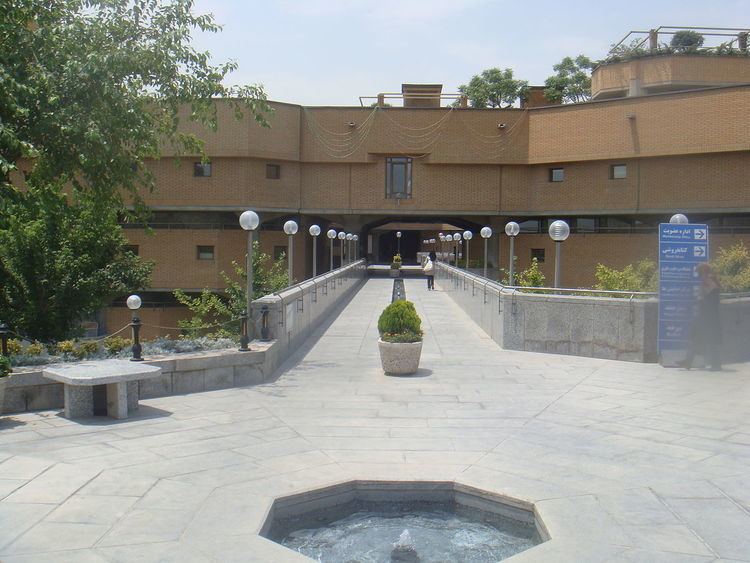Country Iran Phone +98 912 746 2372 | Type National library | |
 | ||
Established 1937 (80 years ago) (1937) Location Shahid Haghani Expressway, Davoodiyeh, Vanak square, Tehran Branches 1 (Shahid Bahonar Street, Niavaran, Tehran) Items collected books, journals, newspapers, magazines, sound and music recordings, patents, databases, maps, stamps, prints, drawings and manuscripts Address Tehran, Tehran Province, Iran Hours Open today · 8AM–9PM, 10PM–7AMNowruz might affect these hoursTuesday(Nowruz)8AM–9PM, 10PM–7AMHours might differWednesday(Nowruz)8AM–9PM, 10PM–7AMHours might differThursday(Nowruz)8AM–9PM, 10PM–7AMHours might differFriday(Nowruz)8AM–9PM, 10PM–7AMHours might differSaturday8AM–9PM, 10PM–7AMSunday8AM–9PM, 10PM–12AMMonday8AM–9PM, 10PM–7AMSuggest an edit Director Reza Salehi Amiri (president, since 28 February 2014) Similar University of Tehran, Tarbiat Modares University, Amirkabir University of Techno, Central Library of University, Tehran Library of Engineeri | ||
National library of iran
The National Library of Iran (NLI) is located in Tehran, Iran, with several branches scattered throughout the city.
Contents
Prior to the library's official inauguration in 1937, other libraries existed that performed the same function informally. The first prototype of a national library in Iran was the Library of Dar al-Funun College, established in 1851. In 1899, another library called the "Nation's Library" was inaugurated in Tehran.
The present National Library of Iran incorporates many different collections from older libraries, including many rare and valuable manuscripts. The central main branch is located in north central Tehran and is still under its final stages of construction.
The new building is specially designed to combine different faculties of the library in a single platform. The library by itself is over 90,000 m2, one of the largest library campuses in the Middle East. It encompasses 5 separate halls, each hall dedicated to a different faculty, including Humanities, Social Sciences, Law, Science and Science Education, and Health Studies.
It took over the publishing of the Iranian National Bibliography (Ketab Shenasi Melli Iran), with annual publications between 1962 and 1966, a break for two years, and then monthly and quartly since 1969.
